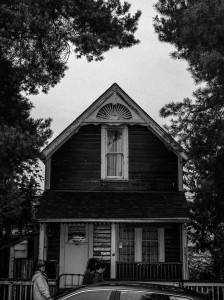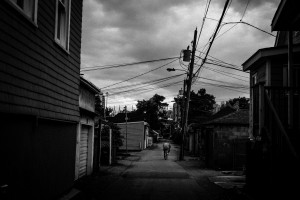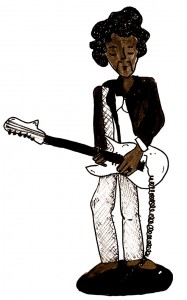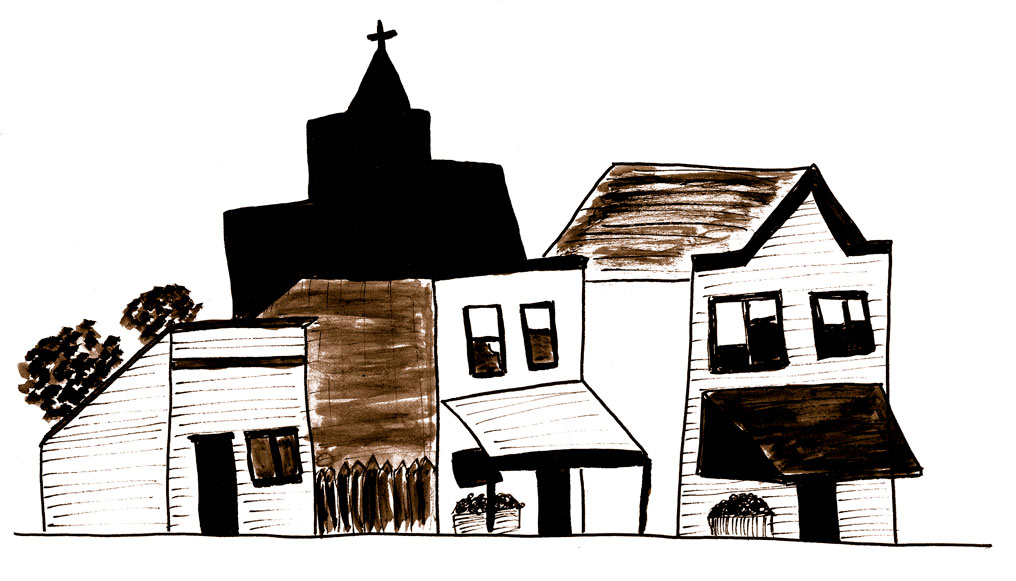The vulnerable streets of high-valued concrete and low valued residents are what has come to characterize Vancouver. With external pressures of development and gentrification in Chinatown and the DTES, marginalized communities are at constant risk of losing their sense of belonging that is deeply embedded in their place. This is precisely why Stephanie Allen and her fellow volunteers from Hogan’s Alley Working Group (HAWG) works relentlessly, on top of a full-time jobs and family commitments, for what she refers to as a “labour of love.”
HAWG is an organization that is currently working with the City of Vancouver on plans for the area under the Georgia and Dunsmuir Viaducts, which was once a cultural core of Vancouver’s first and last centralized Black community. The first Black settlers arrived in Vancouver as early as the late 1800s, many avoiding oppression in the United States. Today Vancouver’s Black population includes people of African, Caribbean, and American, and Canadian descent

Within HAWG, there has emerged two main goals: one being the development of a cultural centre, and the other being a land trust to steward and prevent future displacement. The land trust would allow a not-for-profit organization (Hogan’s Alley Land Trust) to receive ownership of the vacant space, which would then be utilized as commercial, cultural, residential and public land.
In 2015, Vancouver City Council voted to remove the Georgia and Dunsmuir Viaducts, which hover above the Northeast False Creek area, including the former Hogan’s Alley. The plan to take down the viaduct has inspired the opportunity for a project that would enable reconciliation between the City of Vancouver and the Black community. “This is a chance for us is to create and hold space for ourselves, to offer something to the greater community,” says Allen.

Today we use the name Hogan’s Alley to pinpoint the space that was once an active hub. “[Hogan’s Alley] was actually a derogatory term that was used to refer to these racialized inner city areas of settlement, so there are ‘Hogan’s Alleys’ all over the place,” explains Allen. The name has been reclaimed by the local Black community that exists, in hopes to spread awareness about its history and significance. The former neighbourhood is marked by unbounded perimeters, located between Prior Street and Union Street (North to West) and Main Street and Jackson Avenue (West to South).
In addition to the the predominant Black community, Hogan’s Alley was home to Italian, Chinese and Japanese families. The City’s attitude towards the area at the time, and the prominence of cultural diversity that existed there, suggest that segregation resulted from racist and classist coercion.
Hogan’s Alley was also infamous for its nightlife of gambling, drinking, entertainment and chicken houses, all that stirred into the wee hours of the morning. “You had an informal economy which always springs up around people that have to rely on each other,” says Allen. She describes that in the ‘30s and ‘40s, Hogan’s Alley was a flourishing district for food and entertainment, due in large part to the welcoming of people from any class or heritage.
With the rise of automobile culture, freeways and transportation symbolized prosperity. ‘Urban Renewal’ was a trend across North America that justified the disunion of marginalized communities on central pieces of land, making space for urban development. “When the City of Vancouver displaced the community of Hogan’s Alley back in the ‘50s and ‘60s and dispersed the community away from the original area, there was a lasting impact on our generation and future generations,” explains Allen.
‘Urban Renewal’ was not independent in provoking the disintegration of the Hogan’s Alley community. Tensions between the Black community and the City existed well before the proposed demolition of the Hogan’s Alley. Dominant society viewed the community in a lens of poverty, characterized by the presence of violence, drinking and illegal gambling. The area was harshly stigmatized, through racist and classist ideologies projected from the European majority population in Vancouver at the time.
Although the Eastside neighbourhood thrived off of its contrasting cultures, nightlife was not its only social reputation. Another institution that offered a sense of belonging was the Fountain Chapel on 823 Jackson Avenue, founded by Jimi Hendrix’s grandmother, Nora Hendrix. The community had come together to raise money to purchase the chapel, and from there, birthed a “thriving Black community congregation,” says Allen. The Chapel is one of the few buildings still standing that nurtured a once prominent Black community. It was sold in 1985, not too long after the construction of the Georgia and Dunsmuir Viaducts.

In the years arising the destruction of Hogan’s Alley, the community had already started to disperse into neighbourhoods that were more affluent at the time. The area was marked with stigma, so it wasn’t much of a surprise with the cultural changes of the ‘60s, that members of the Hogan’s Alley community left to exercise equality in greater society. Speaking to the effect of this migration, Allen states, “Vancouver has the lowest Black population of all of Canada’s top ten major cities, and that can be traced directly back to the action, I would argue, of the former city council to break up this neighbourhood.” There is a need for reconciliation between the City of Vancouver and the local Black population.
For HAWG, the vision of the future is a place of historical awareness and inclusivity. With a steady increase in the Black immigrant population, it is important to HAWG that people of all diverse backgrounds feel represented. “People have a better success rate, especially those who are racialized, when they have a sense of community and social networks to tap into,” explains Allen. It is this realization that has provoked her and many others to take action. “As we see other communities have their places and their heritage, and they were able to grow into the greater fabric of the city, that’s what we hope to accomplish for our people.”
HAWG hopes to create space for community growth by incorporating a reflection of the past into their proposal for the future. Recreating a geographical centre provides a physical place for members of the Black community and the greater Vancouver to network, and learn more about the rich history of Black heritage in Vancouver. The project hopes to achieve a place for the community that mirrors the multi-cultural, co-dependent community that existed over sixty years ago.
The viaducts could be dismantled as soon as 2018, so HAWG is working closely with the City of Vancouver to assure that the place will accurately reflect their vision. There are a web of interrelated non-for profit organizations at work. Connected to HAWG, there is the Hogan’s Alley Talk back! group, that functions to start public discourse and receive feedback from the greater community, The Hogan’s Alley Trust, which focuses on the plans for land stewardship, and lastly there is the Hogan’s Alley Society, which will be active in the development of a cultural center. Although today’s Black communities are dispersed across the Greater Vancouver area, concepts of time and distance are challenged by the obligation to give a systematically displaced community agency.
x
HAWG is hosting a talk with the Institute for Diaspora Research and Engagement November 17 at SFU Harbour Centre. Their guest is Zena Howard, the architect from North Carolina leading the engagement with HAWG. For more information, including details about the project and other events, visit hogansalleytrust.ca.
References:
Compton, Wayde. 2005. Hogan’s Alley and retro-speculative verse. West Coast Line: A Journal of Contemporary Writing & Criticism 39 (2): 109
Cramp, Beverly. 2008. Neighbourhood Lost. Beaver 88 (2): 28..
Jo, M., & Yann. 2014, Spring. From Hogan’s Alley. Broken Pencil: 42-45.
Scott, Curtis. 2013. The End of Hogan’s Alley – Part 1. Spacing Vancouver. (accessed online October 31, 2017)


